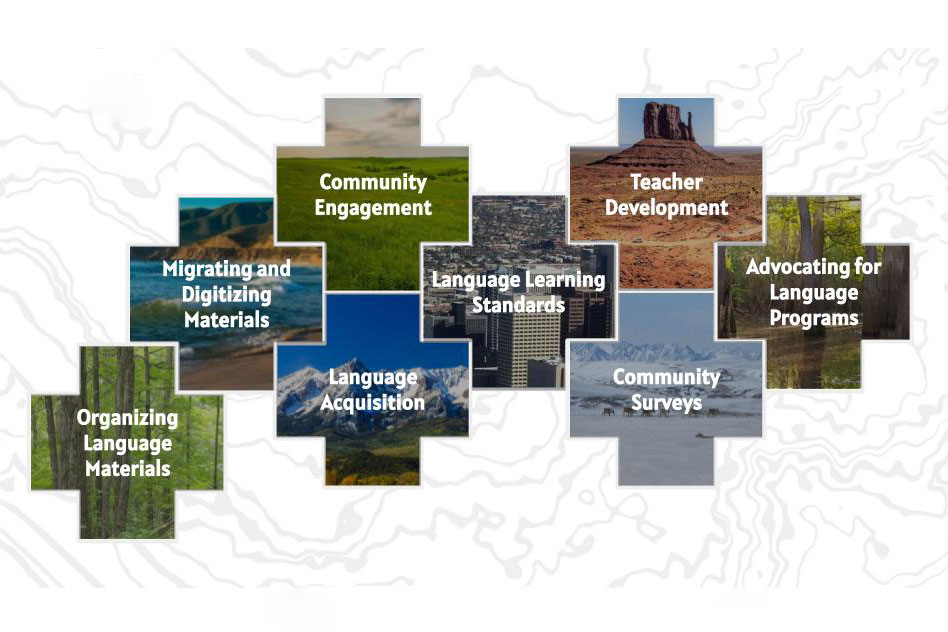The Center for Folklife and Cultural Heritage’s Language Vitality Initiative has partnered with the Administration for Native Americans (ANA) to build language revitalization skills for ANA’s 397 current Indigenous grantees. A series of eight monthly online workshops, called “Language Reclamation Landscapes,” will cover panoramic topics identified by ANA grantees.
In 2022, ANA approached the Center to collaborate on designing the learning series around common grantee issues and challenges to revitalizing their Native languages. Learning objectives for the series include building concrete skills, such as organizing language materials or conducting surveys; teaching and leadership skills; understanding language acquisition; and community advocacy. Together, ANA and the Language Vitality team refined the topics into workshops which could benefit projects at different stages in their language reclamation process. The result is a learning series featuring guest speakers with in-depth experience on each topic, interactive discussions, and networking opportunities to increase connections between reclamation efforts across the United States.
“The goal of the learning series is to strengthen and empower our Native communities’ ability to reclaim their own Native languages by creating a community of practitioners,” writes Carmelia Strickland, director of ANA’s Division of Program Operations.
The workshop topics are discussed within the concept of landscapes. Guest speakers serve as guides through the landscape, providing insights from their experience and facilitating discussions on topics such as digitizing and migrating materials, the process of language acquisition, and developing community surveys. This approach is designed to foster collaborative learning by recognizing that everyone comes with unique knowledge, experience, and questions that can be shared to benefit the whole group. Peer-based learning builds on the vast examples of successful approaches across different communities and language teams and creates networks that sustain learning and sharing beyond the series.
The Center hopes to incorporate learnings from this series into public training opportunities in the future.
About the Administration for Native Americans
The Administration for Native Americans promotes self-sufficiency for Native Americans by providing discretionary grant funding for community-based projects, and training and technical assistance to eligible tribes and Native organizations. Their federal office within the Administration for Children & Families currently supports 397 grantees across their service programs which implement language reclamation activities as key components within their funding.
About the Language Vitality Initiative
With Indigenous and minoritized languages under threat, the Smithsonian Center for Folklife and Cultural Heritage’s Language Vitality Initiative supports community-driven language reclamation efforts. Our research promotes language use in new and traditional contexts and strengthens engagement in cultural heritage wellness. We work with digital and emerging media to promote unique voices and worldviews. We seek to educate new generations of community language practitioners and linguists through informal and formal workshops and institutes. All our work is used to educate majority-language users about the benefits of living in a multilingual world.


